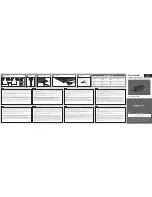
EasyNote MB Disassembly Manual
21
DC Jack
1.
Remove the top cover as described above.
2.
Disconnect the DC jack connector from the mainboard.
Fig. 31
The DC jack connector.
3.
Remove the metal shield covering the DC Jack and modem connector.
Fig. 32
The small metal shield.
4.
Lift the DC Jack from its bracket.



































